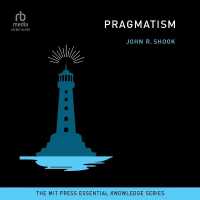Full Description
Rome is not only enriched by the works that have led it to be known as the "eternal city", or with those monuments that still preserve the stories of a strong people, such as the Colosseum, the Roman Forum or Castel Sant'Angelo. It is not only the symbolic centre of Christianity thanks to St. Peter's Basilica, or the central and figurative hub of the Italian Republic because of the Palazzo del Quirinale. The history, art, and culture of Rome tell the story of a process of restoration and innovation that sees the participation of some timeless places and the birth of other contemporary community services that join those already known to the public. During 1930s, the social and cultural revolution and call for functionality and practicality are represented by impressive modern public and residential works, as well as by major operations from architectural protagonists in the urban change of the capital. Works such as the university city of Sapienza and its institutes, or the EUR district tell the story of the formal transition between modernity and contemporaneity.
Contents
Guidebook as tool 4
Rome 5
Political / geographical facts 6
General information 7
Useful tips 8
Rome. Echoes, Illusions, Aspirations 10
Rome, a City Without a Memory 12
Rome: Future Perspectives 14
Rome skyline 17
Strategies for visiting Rome 20
Routes 22
Rome Centre 24
North Rome 88
East Rome 130
South Rome 158
Museums and palaces 208
Basilicas and churches 210
Theatres 211
Restaurants and trattorias 212
Hotels 213
Architectural offices 214
Index by architect 216
Index by project 219
Transport 222








